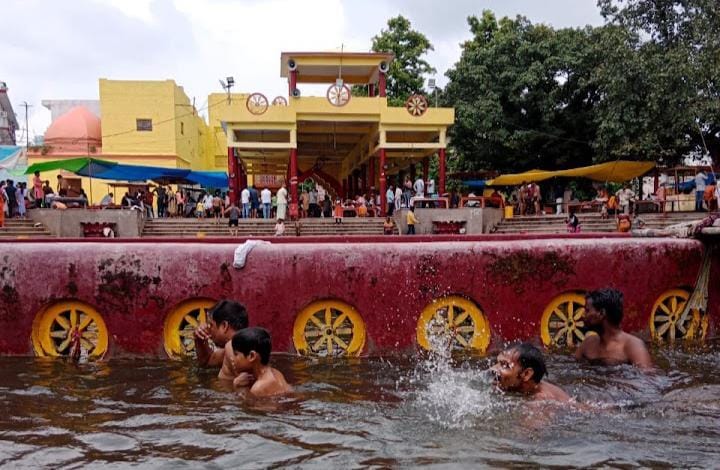The holy city of Prayagraj (formerly Allahabad) is one of the most significant spiritual destinations in India, renowned for the Triveni Sangam—the sacred confluence of the Ganga, Yamuna, and Saraswati rivers. Among its many temples, the Lalita Devi Shakti Peeth holds special importance as one of the 51 Shakti Peethas, sacred sites where the body parts of Goddess Sati are believed to have fallen.
According to Hindu mythology, the finger of Goddess Sati fell at this site, sanctifying it as a place of divine feminine power. Devotees believe that worshiping Lalita Devi here fulfills wishes, removes obstacles, and grants blessings of strength and prosperity.
Lalita Devi is considered a manifestation of Goddess Adi Shakti, and her temple at Prayagraj continues to draw lakhs of devotees, especially during auspicious occasions like the Magh Mela, Navratri, and Kumbh Mela.

Mythological Background
The origins of Lalita Devi Shakti Peeth are deeply rooted in the legend of Sati and Lord Shiva. When Sati immolated herself at Daksha’s yagna, a grief-stricken Lord Shiva carried her body across the universe in a furious dance of destruction. To calm him, Lord Vishnu used his Sudarshan Chakra to cut Sati’s body into pieces.
Each body part fell at a different place, sanctifying that location as a Shakti Peeth. It is believed that Sati’s finger fell at Prayagraj, marking it as the sacred Lalita Devi Shakti Peeth.
Here, Goddess is worshiped as Lalita Devi, symbolizing compassion, grace, and protective energy, while Lord Shiva is revered as Bhairav Bhava—the guardian deity of this Shakti Peeth.
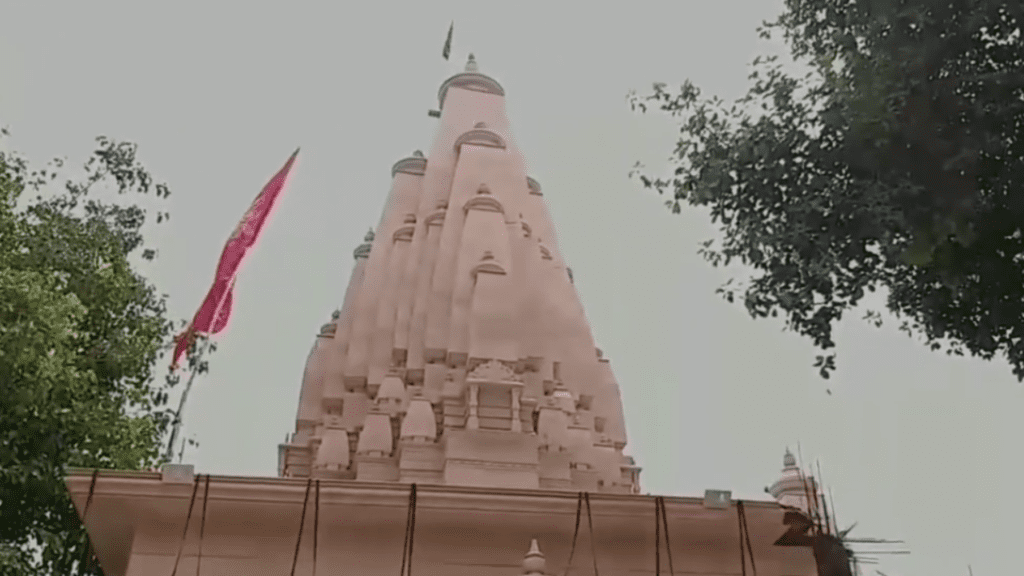
Historical Importance of Lalita Devi Temple
The temple of Lalita Devi in Prayagraj is not only mythologically significant but also historically revered. Mentions of this temple appear in several Puranas, including the Devi Bhagavatam and Kalika Purana, emphasizing its role as a center of Shakti worship.
In ancient times, Prayagraj was known as Kaushambi and considered one of the holiest pilgrimage destinations. Pilgrims who visited the Triveni Sangam would also pay homage at the Lalita Devi Temple, believing their visit incomplete without seeking the goddess’s blessings.
Over centuries, rulers, saints, and devotees have contributed to the temple’s preservation. The Mughals and later rulers of the region tried to suppress Hindu temples, but the faith of devotees kept the worship alive. Today, the temple stands as a symbol of resilience and devotion, welcoming pilgrims from across India.
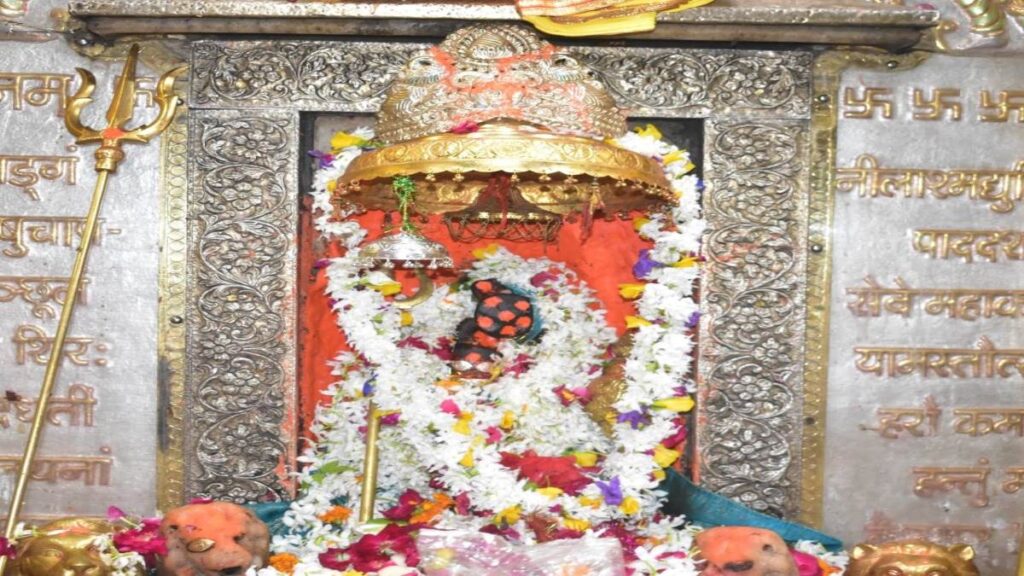
Location and How to Reach
The Lalita Devi Temple is situated in Meerapur, Prayagraj (Allahabad), Uttar Pradesh, close to the sacred Triveni Sangam. Its location makes it an essential stop for pilgrims visiting the city for spiritual rituals.
- By Air: The nearest airport is Prayagraj Airport (Bamrauli), about 12 km away. Regular flights connect Prayagraj to Delhi, Lucknow, and other cities.
- By Train: Prayagraj Junction is a major railway station, well-connected to all parts of India. The temple is just a few kilometers from the station.
- By Road: The city has excellent road connectivity through NH19 and NH30. State buses, taxis, and private cars can easily take visitors to the temple.
- Local Transport: Auto-rickshaws, e-rickshaws, and cycle-rickshaws make it convenient to reach the temple within the city.
The temple’s proximity to the Sangam makes it easy for pilgrims to include both in their itinerary.
Architecture of the Temple
The Lalita Devi Temple showcases the Nagara-style temple architecture, commonly seen in North Indian shrines. Its sanctum (garbhagriha) houses the idol of Ma Lalita Devi, depicted as a serene yet powerful form of the goddess.
- The idol of Lalita Devi is adorned with flowers, silk garments, and ornaments, reflecting the devotion of her followers.
- The temple features intricate carvings and sacred motifs, symbolizing divine energy.
- The mandap (pillared hall) is used for congregational prayers and chanting during special occasions.
- Devotees enter through an ornate gateway, leading them into a spiritual atmosphere filled with incense fragrance, bells, and chanting of mantras.
Despite its simplicity compared to larger Shakti Peeth temples, Lalita Devi Temple radiates an aura of sanctity and attracts devotees seeking inner peace.
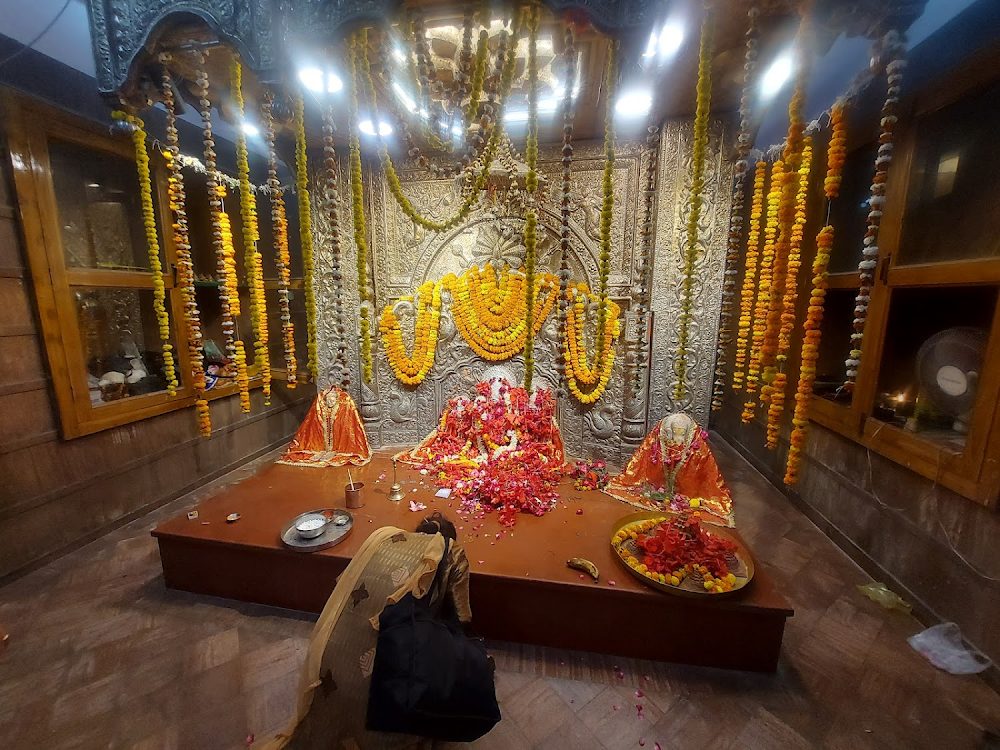
Rituals and Worship at Lalita Devi Shakti Peeth
Daily worship at Lalita Devi Temple includes:
- Mangala Aarti (Morning Prayer): Performed at dawn, devotees gather to witness the goddess being awakened with chants and bhajans.
- Alankaram (Adornment): The idol is decorated with flowers, ornaments, and colorful clothes every day.
- Archana and Abhishek: Devotees offer milk, honey, fruits, and coconuts as part of sacred rituals.
- Evening Aarti: The temple resonates with the sound of conch shells and bells as devotees join in prayer.
Special poojas are conducted during Navratri, when the temple becomes a hub of devotional energy. Pilgrims also perform Shakti pujas here to seek blessings for health, protection, and prosperity.
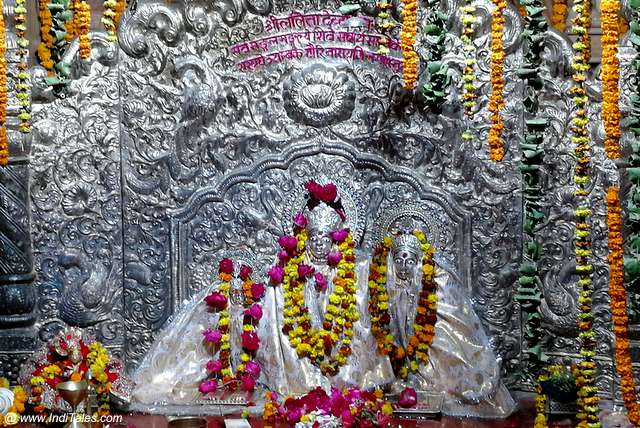
FAQs for Lalita Devi Shakti Peeth
1. Why is Lalita Devi Shakti Peeth famous?
It is one of the 51 Shakti Peethas, dedicated to Goddess Lalita Devi, a manifestation of Shakti, and holds immense religious importance.
2. Where is Lalita Devi Shakti Peeth located?
It is situated in Prayagraj (Allahabad), Uttar Pradesh, near the sacred confluence of the Ganga, Yamuna, and Saraswati rivers.
3. What is worshipped at Lalita Devi Shakti Peeth?
The temple is dedicated to Goddess Lalita Devi, representing power, grace, and divine protection.
4. What are the temple timings?
The temple generally opens from 5:00 AM to 9:00 PM, with daily aarti and puja rituals.
5. Is photography allowed inside Lalita Devi Shakti Peeth?
Photography is usually restricted inside the sanctum, but may be allowed in the outer premises.
6. What is the significance of Lalita Devi Shakti Peeth as a Shakti Peetha?
It is believed that the fingers of Goddess Sati’s hand fell here, making it a holy pilgrimage site.
7. How can I reach Lalita Devi Shakti Peeth?
The temple is accessible from Prayagraj city, with the nearest railway station being Prayagraj Junction and the nearest airport Prayagraj Airport.
8. Are there any special rituals at Lalita Devi Shakti Peeth?
Yes, daily pujas, Navratri celebrations, and special offerings attract thousands of devotees.
9. Is there accommodation near Lalita Devi Shakti Peeth?
Yes, guesthouses, hotels, and dharamshalas are available in Prayagraj for pilgrims.
10. What is the best time to visit Lalita Devi Shakti Peeth?
October to March is considered ideal, especially during festivals like Navratri and the Magh Mela.

